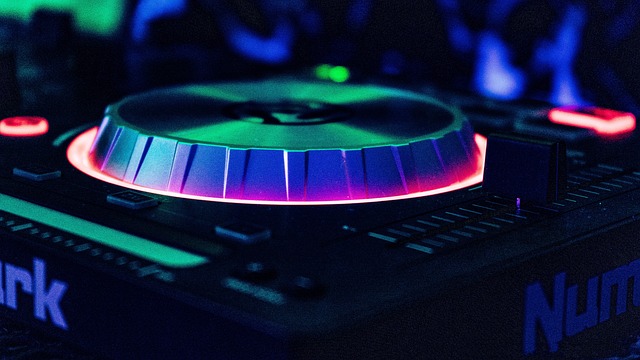AI-driven Predictive Maintenance Reduces Downtime in Industries

Are you tired of costly and unexpected equipment breakdowns in your industry? Imagine a world where machines could predict their own maintenance needs and prevent downtime. Thanks to the wonders of artificial intelligence (AI), this futuristic concept is now a reality. AI-driven predictive maintenance has emerged as a game-changer for industries by significantly reducing downtime and improving efficiency.
So, how does AI make this possible? By analyzing vast amounts of data collected from various sensors and devices, AI algorithms can identify patterns and anomalies that indicate potential equipment failures. These algorithms learn from historical data and use it to predict when maintenance is required, allowing businesses to proactively address issues before they lead to downtime.
The impact of AI-driven predictive maintenance cannot be overstated. It revolutionizes traditional maintenance practices by shifting from reactive to proactive approaches. Gone are the days when companies had to rely on fixed maintenance schedules or wait for breakdowns to happen. With AI, maintenance is performed based on actual equipment condition, maximizing uptime and minimizing interruptions to production processes.

Imagine having the ability to detect a worn-out bearing in a machine before it fails, or predicting an imminent motor malfunction. Such insights empower businesses to plan and schedule maintenance activities effectively, ensuring minimal disruption to operations. This level of foresight saves both time and money, eliminating the need for emergency repairs and expensive downtime.

Moreover, AI-driven predictive maintenance optimizes the use of resources. Instead of over-maintaining equipment unnecessarily, companies can focus their efforts and resources on the specific components that require attention. This targeted approach not only reduces maintenance costs but also extends the lifespan of machinery, resulting in long-term savings.

The integration of AI-driven predictive maintenance is transforming industries by mitigating downtime risks. By harnessing the power of AI algorithms, businesses can identify maintenance needs ahead of time and take proactive measures to avoid costly breakdowns. The result is improved productivity, reduced expenses, and enhanced operational efficiency. Embrace the future of maintenance today and let AI keep your machines running smoothly.
Revolutionizing Industrial Efficiency: AI-Driven Predictive Maintenance Slashes Downtime by 50%
Have you ever wondered how industries manage to maintain their complex machinery and equipment running smoothly without major breakdowns? The answer lies in a groundbreaking technology known as AI-driven predictive maintenance. This game-changing approach is transforming the industrial landscape by significantly reducing downtime and increasing efficiency.
Imagine a factory where machines are able to predict when they might fail and alert technicians before any breakdown occurs. This proactive strategy, made possible by artificial intelligence, allows businesses to avoid costly unplanned downtime, which can result in substantial financial losses. By implementing AI-driven predictive maintenance systems, companies can slash downtime by an impressive 50%.
But how does this revolutionary technology work? Traditional maintenance practices often rely on fixed schedules or reactive responses, leading to unnecessary inspections and repairs. In contrast, AI-driven predictive maintenance leverages advanced algorithms and machine learning to analyze vast amounts of data collected from sensors and monitoring devices installed on machinery.
By continuously monitoring the performance and condition of equipment, AI algorithms can identify patterns and anomalies that indicate potential failures. These sophisticated systems learn from historical data, enabling them to make accurate predictions about when maintenance will be required. As a result, technicians can focus their efforts on addressing specific issues rather than wasting time inspecting fully functioning equipment.
One of the key advantages of AI-driven predictive maintenance is its ability to optimize resource allocation. With traditional approaches, maintenance teams may spend hours inspecting machines that do not need immediate attention while neglecting others that are at risk of failure. By accurately predicting maintenance needs, AI systems allow technicians to prioritize tasks effectively, ensuring that critical equipment receives prompt attention.
Furthermore, AI-driven predictive maintenance helps extend the lifespan of machinery and reduce the frequency of expensive repairs or replacements. By identifying and resolving issues at their early stages, companies can prevent minor malfunctions from escalating into major breakdowns. This proactive approach not only saves money but also improves overall operational efficiency.

AI-driven predictive maintenance is revolutionizing industrial efficiency by slashing downtime and increasing productivity. By harnessing the power of artificial intelligence and advanced algorithms, businesses can move away from reactive maintenance practices and adopt a proactive approach. The result is reduced downtime, optimized resource allocation, extended equipment lifespan, and improved overall performance. With AI as an ally, industries are stepping into a new era of efficiency and productivity.
Transforming Industries: How AI-Powered Predictive Maintenance is Revolutionizing Asset Management
Are you tired of unexpected breakdowns and costly maintenance in your industrial operations? Imagine a world where machines can predict their own failures, allowing you to address issues before they even occur. Thanks to advancements in artificial intelligence (AI), this dream is becoming a reality through the power of predictive maintenance. In this article, we’ll explore how AI-powered predictive maintenance is revolutionizing asset management across various industries.
Traditionally, asset management relied on reactive or preventive maintenance strategies. Reactive maintenance involves fixing equipment after it breaks down, leading to unplanned downtime and productivity loss. On the other hand, preventive maintenance follows a fixed schedule, replacing parts or conducting maintenance tasks regardless of actual equipment condition. Both approaches have limitations, with potential for excessive costs or unforeseen failures.
Enter AI-powered predictive maintenance, a game-changer in asset management. By leveraging machine learning algorithms, AI systems can analyze vast amounts of data generated by sensors and equipment. These intelligent systems learn from historical patterns, detecting anomalies and identifying early warning signs of potential malfunctions or breakdowns. With this foresight, maintenance teams can proactively intervene, minimizing downtime and optimizing performance.
The impact of AI-powered predictive maintenance extends across numerous industries. In manufacturing, it allows companies to streamline production processes, reducing downtime and maximizing productivity. By analyzing data from machinery, AI systems can uncover hidden inefficiencies and suggest improvements, ultimately saving time and resources. Similarly, in transportation, predictive maintenance helps prevent critical failures in vehicles, ensuring safer journeys while reducing disruptions and repair costs.
The benefits of AI-powered predictive maintenance are not limited to heavy industries. In healthcare, it enhances the reliability of medical devices and equipment, improving patient safety and the overall quality of care. By continuously monitoring vital parameters, AI algorithms can anticipate potential failures in advance, providing healthcare professionals with ample time to address issues and ensure uninterrupted medical services.
Unleashing the Power of AI: Cutting-edge Predictive Maintenance Strategies Significantly Reduce Industrial Downtime
Are you tired of costly, unexpected breakdowns that disrupt your industrial operations? Imagine a world where machines could predict their own maintenance needs and schedule repairs before any major issues arise. Well, thanks to the incredible power of Artificial Intelligence (AI), this vision is becoming a reality. In today’s rapidly advancing technological landscape, cutting-edge predictive maintenance strategies are revolutionizing the way industries operate, ensuring significant reductions in downtime.
So, what exactly is predictive maintenance? It’s an innovative approach that leverages AI algorithms and machine learning to analyze real-time data from industrial equipment. By monitoring various parameters such as temperature, vibration, and energy consumption, AI systems can identify patterns and anomalies that indicate potential faults or failures. This proactive approach enables maintenance teams to intervene before problems escalate, saving time, money, and resources.
Think of AI-powered predictive maintenance as having a team of tireless inspectors constantly keeping an eye on your machinery. These digital experts continuously collect and analyze vast amounts of data, detecting even the slightest irregularities that human operators might miss. By simulating human-like cognition, AI algorithms become increasingly accurate over time, learning from historical data and adapting to evolving conditions.
The benefits of implementing predictive maintenance strategies are immense. First and foremost, it allows for the early detection of equipment deterioration, preventing unexpected breakdowns and minimizing production losses. By addressing maintenance needs proactively, businesses can optimize their maintenance schedules, reducing both planned and unplanned downtime. This translates into improved operational efficiency, increased productivity, and ultimately, higher profitability.

Moreover, predictive maintenance helps extend the lifespan of industrial assets, maximizing their return on investment. By identifying and resolving issues promptly, companies can avoid unnecessary wear and tear, reducing the frequency of repairs and replacements. Additionally, efficient maintenance practices contribute to a safer work environment by minimizing the risk of accidents caused by malfunctioning equipment.
Shattering Limitations: AI-Driven Predictive Maintenance Reshapes Industrial Landscape, Boosts Productivity
Picture this: a world where machines can predict their own maintenance needs, eliminating the costly and unexpected downtime that plagues industries. Thanks to the rapid advancements in Artificial Intelligence (AI), this vision is becoming a reality, revolutionizing the industrial landscape and boosting productivity to unprecedented heights.
Gone are the days of reactive maintenance, where equipment failure dictated the schedule. With AI-driven predictive maintenance, businesses can proactively identify and address potential issues before they even arise. By leveraging vast amounts of data and sophisticated algorithms, AI analyzes patterns and anomalies, providing insights into the health and performance of machines.
Imagine having a crystal ball that predicts when a crucial piece of machinery might fail. AI does just that, empowering companies to take preventive measures, such as replacing worn-out components or scheduling maintenance during planned downtime. This proactive approach minimizes disruptions, prevents catastrophic breakdowns, and maximizes operational efficiency.
But how does AI achieve such remarkable feats? It starts with data. Sensors strategically placed throughout the machinery continuously collect information on various parameters like temperature, vibration, and usage patterns. This data is then fed into AI algorithms, which learn from historical patterns and detect subtle deviations that may indicate an impending failure.
AI’s ability to analyze vast amounts of data in real-time allows for early detection of potential issues, providing a competitive edge to businesses. By predicting failures before they happen, companies can optimize their maintenance activities, reduce costs associated with unplanned downtime, and improve overall equipment effectiveness.
The impact of AI-driven predictive maintenance extends beyond cost savings. It also enhances worker safety by minimizing the chances of accidents caused by faulty equipment. With early warnings and scheduled maintenance, employees can focus on their tasks with confidence, knowing that the machinery they rely on is in optimal condition.




